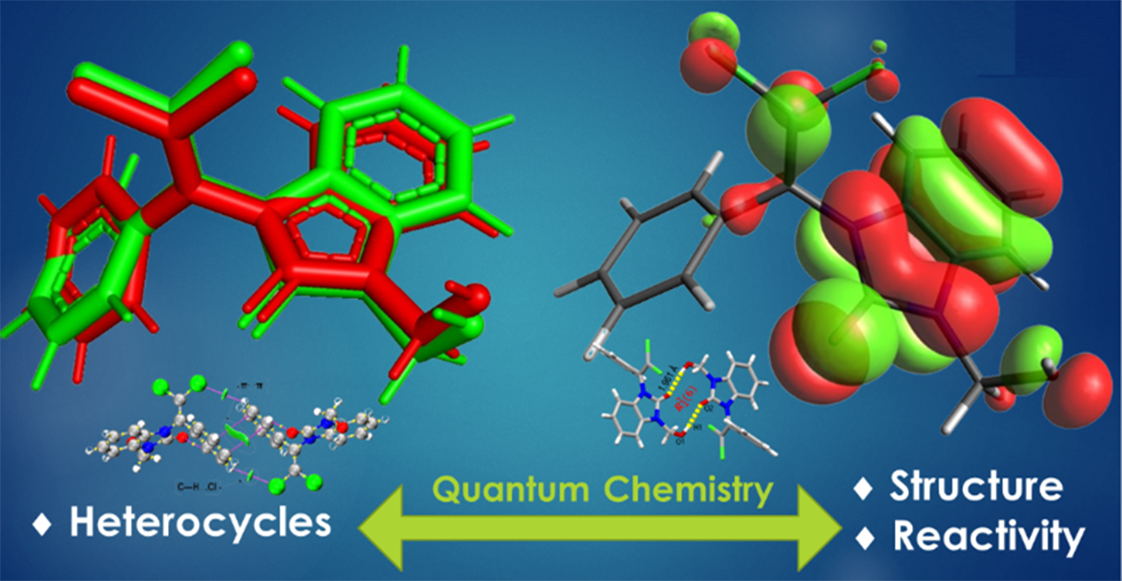Structural and chemical reactivity insights of a benzimidazolidinone-based N-heterocycle: a multiapproach quantum-chemical study
Keywords:
benzimidazolidinone, conceptual DFT, noncovalent interactions, organic N-heterocycles, quantum chemistryAbstract
Quantum-chemical methods offer a powerful tool to elucidate the structure, properties, and reactivity of heterocyclic aromatic organic compounds. This study explores the structural features and chemical behavior of a representative N-heterocyclic crystal, 1-(2,2-dichloro-1-phenylvinyl)-3-(hydroxymethyl)-1,3-dihydro-2H-benzimidazol-2-one. By combining crystallographic and quantum-chemical methods, molecular geometry, noncovalent interactions (NCIs), and reactivity of both monomeric and dimeric forms of this compound have been investigated. The solid-state structure was found to be governed by a network of intermolecular interactions, including strong O–H···O hydrogen bonds, unconventional C–H···O and C–H···Cl hydrogen bonds, and π-interactions (C–H···π and π–π). Multiapproach quantum mechanics analysis based on dispersion-corrected density functional theory (DFT-D/ωB97X-D/aug-cc-pVTZ) revealed the electronic properties, energetics, and nature of these NCIs. Furthermore, conceptual DFT global reactivity indices identified the studied molecule as a moderate electrophile and strong nucleophile in polar organic reactions, while Parr functions method uncovered preferred sites for electrophilic and nucleophilic attacks.

